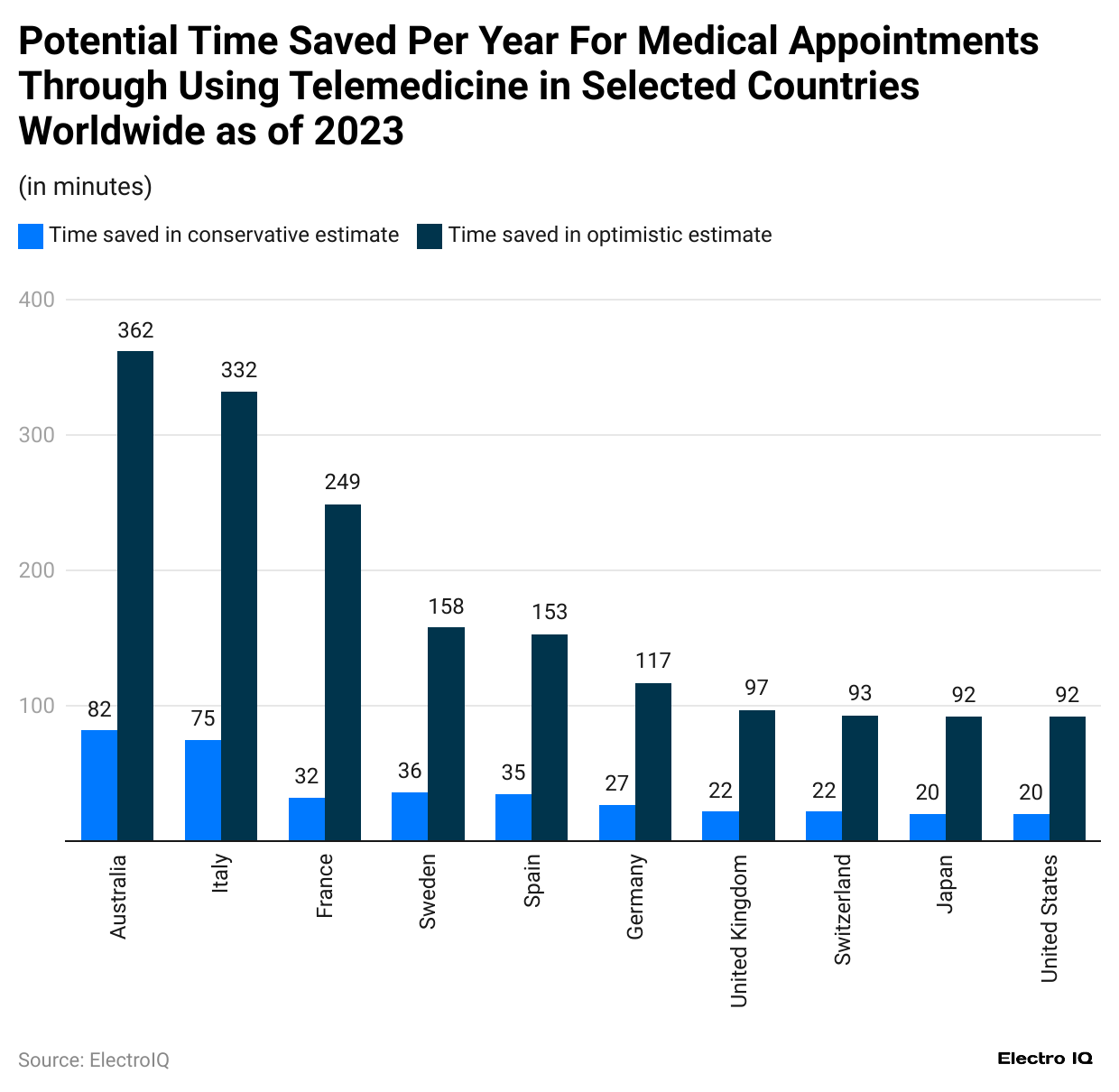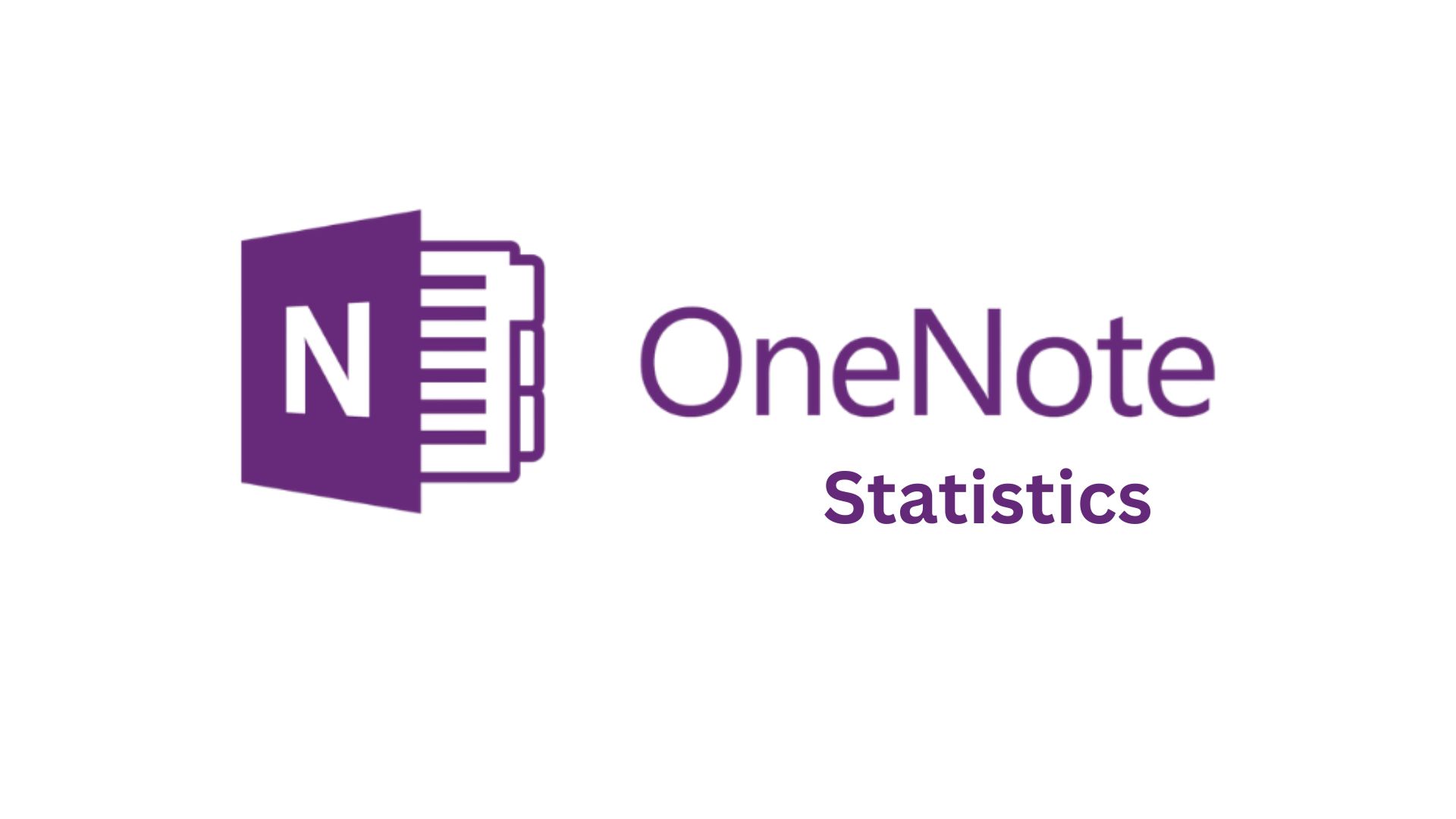Telehealth Statistics By Specialty, Health Technologies And Revenue
Updated · Oct 04, 2024

Table of Contents
- Introduction
- Editor’s Choice
- Online Doctor Consultations Worldwide
- Online Doctor Consultation Penetration Rate
- Insured People Using Telemedicine By Region
- Availability of Telemedicine Services
- Insurers Providing Telehealth Through Current Plans Worldwide
- Time Saved Via Telemedicine Appointments
- Potential Time Saved For Chronic Patients
- Top-Funded Digital Health Technologies
- Digital Health Market Revenue
- Revenue of Online Doctor Consultations
- Telemedicine Usage By Specialty
- Obstacles to Telehealth Usage
- Satisfaction With Telehealth Services
- Share of Telehealth Visits
- Telehealth overview
- Conclusion
Introduction
Telehealth Statistics: Telemedicine uses electronic communication and information systems for a health care provider. Primarily, it consists of aspects such as consultation, monitoring, and health care. If one looks at the Telehealth Statistics, one will note that it has become a popular and widely used form of medical consultation.
It would be interesting to learn about the aspects revolving around telehealth to understand the telemedical feature. One can learn about the importance of this technology by learning about relevant statistical figures.
Editor’s Choice
- Online doctor consultations are projected to reach 130.41 million users by 2028.
- The penetration rate for online consultations is predicted to be 1.63% by 2028.
- Globally, 66% of insured people use telemedicine services.
- 75% of telemedicine services are available through third-party vendors globally.
- Australia saves the most time with telemedicine appointments, at 82 minutes annually.
Online Doctor Consultations Worldwide

(Reference: statista.com)
- Telehealth Statistics showcase that online doctor consultations have increased over time.
- While in 2017, the number of online doctor consultants was 26.82 million, it has increased to 111.08 million by the end of 2023.
- By the end of 2028, the annual number of online consultation users will be 130.41 million.
Online Doctor Consultation Penetration Rate

(Reference: statista.com)
- The Telehealth Statistics showcase that the penetration rate for online consultation has increased significantly over time.
- 2017, the penetration rate was 0.37%, increasing to 1.34% by 2023.
- By the end of 2028, the penetration rate is predicted to be 1.63%.
Insured People Using Telemedicine By Region
(Reference: statista.com)
- Telehealth Statistics showcase that converted people who have used telemedicine can be divided into the following regions: Global, Latin America, Asia Pacific, Europe, Middle East, and Africa.
- Over the world, along with other regions specifically, less than 10% of the population uses telehealth, with Global 66%, Latin America 77%, Asia Pacific 76%, Europe 53%, Middle East and Africa 76% market share.
Availability of Telemedicine Services

(Reference: statista.com)
- Telehealth Statistics show that telemedicine distribution can be categorized into options: Available through an owned entity, Available through a third-party vendor/partner, and Not available/offered.
- Available through a third-party vendor is the majority choice among respondents, with Global at 75%, Latin America at 58%, Asia Pacific at 82%, Europe at 77%, and Middle East and Africa at 59%.
Insurers Providing Telehealth Through Current Plans Worldwide

(Reference: statista.com)
- The Telehealth Statistics reveal that respondents have the following responses: Yes – across all plans/portfolio, Yes – only for select plans/clients, No – but expect to add in 2022, No – not expected to be added soon.
- For most regions, namely Global, Latin America, Asia Pacific, Europe, Middle East, and Africa, the response has been mostly positive for insurers providing telehealth services across different regions.
Time Saved Via Telemedicine Appointments

(Reference: statista.com)
- Telehealth Statistics showcase that among the regions Japan, France, United Kingdom, Spain, Italy, Germany, Switzerland, United States, Australia, and Sweden, Australia gas highest time saved with 82 minutes per year with telemedicine appointments.
- Regarding optimistic time saved, Australia is the leader, with 362 minutes saved.
Potential Time Saved For Chronic Patients

(Reference: statista.com)
- The Telehealth Statistics showcase that among the regions: United Kingdom, Spain, Sweden, Italy, France, Japan, United States, Switzerland, Germany, Australia, Italy has the highest potential time saved for chronic patients worldwide with 128 minutes.
- Regarding potential time saved among customers, Italy is again the leader with 567 minutes.
Top-Funded Digital Health Technologies

(Reference: statista.com)
- Telehealth Statistics showcase that analytics, telemedicine, clinical decision support, wellness, and mHealth apps are the top health categories in which funding is available.
- Telemedicine receives the highest funding with $4.2 billion, followed by Wellness with $1.7 billion, mHealth apps with $1.6 billion, Analytics with $1.5 billion, and Clinical decision support with $1.1 billion.
Digital Health Market Revenue

(Reference: statista.com)
- Telehealth Statistics showcase that Digital fitness & well-being and e-health are the two prominent categories used for revenue for the digital health market.
- It is predicted that by the end of 2027, digital fitness and well will have $146.83 billion, and eHealth will have $109.5 billion in market revenue.
Revenue of Online Doctor Consultations

(Reference: statista.com)
- Telehealth Statistics show that doctors’ revenue via online consultations has increased significantly.
- While 2017 the revenue was $4.46 billion, it reached $23.75 billion by the end of 2023.
- By the end of 2028, online doctor consultations’ revenue is projected to be $35.83 billion.
Telemedicine Usage By Specialty

(Source: cdc.gov)
- Telehealth Statistics reveal that 53.9% of respondents use telemedicine for primary care.
- In comparison, 63.3% use it for surgical specialties, and 41.5% of respondents use telemedicine for a medical specialty.
Obstacles to Telehealth Usage

(Reference: statista.com)
- Telehealth Statistics showcase that Access to a private space for a doctor’s appointment, having a computer with video capabilities, availability of high-speed internet, finding a telehealth provider who speaks your language, managing personal visual or hearing impairments, and using digital technology efficiently are primary reasons shared by respondents that serve as a barrier to telehealth consultations.
- For those under 65, Access to private locations for doctors is the major obstacle, with 23%, followed by Your ability to use the internet or digital technology with 21%, Access to high-speed internet/broadband with 21%, Access to a computer/device with video capability with 19%, Finding a telehealth provider or doctor who can speak your language with 18%, Access to a private location to complete a doctor appointment with 16%, Your own visual or hearing impairment with 16%.
- For 65+, inability to access the internet is the primary reason with 49%, followed by Access to a computer/device with video capability with 46%, Access to high-speed internet/broadband with 42%, Access to a private location to complete a doctor appointment with 23%, Finding a telehealth provider or doctor who can speak your language with 18%, Your own visual or hearing impairment with 16%.
Satisfaction With Telehealth Services

(Reference: statista.com)
- Telehealth Statistics showcase that the Netherlands, France, Sweden, New Zealand, Switzerland, the UK, Germany, the United States, Canada, and Australia rank among the top countries that have shown satisfaction among customers for telehealth services.
- Australia has shown the highest satisfaction with 86%, followed by Canada with 84%, UK with 82%, Netherlands with 81%, New Zealand with 78%, United States with 77%, Sweden with 56%, France with 56%, Switzerland with 45%, Germany with 26%.

(Reference: statista.com)
- Telehealth Statistics showcase that among Sweden, the United States, France, Canada, Australia, the UK, Germany, Switzerland, New Zealand, and the Netherlands, the UK has the highest number of patient visits, with 28% of respondents visiting 75%+ times.
- In contrast, the United States has the lowest distribution of patients using telehealth, with 18% of respondents.
Telehealth overview
Telehealth, providing healthcare services remotely via telecommunications technology, has seen significant growth in recent years, mainly driven by the COVID-19 pandemic. With patients looking for safer, more convenient ways to access healthcare, telehealth became an essential service. As we step into 2023, the telehealth market continues to expand, and it is projected to grow even further in 2024, fueled by advancements in technology, changing patient behavior, and increased investment.
#1. Telehealth Market Growth in 2023
- In 2023, the global telehealth market was valued at approximately 85 billion US dollars. This represents a significant growth from previous years, reflecting a compound annual growth rate (CAGR) of about 25% since 2020. The rise in telehealth services has been driven by an increased need for remote care, particularly in rural areas with limited access to healthcare facilities.
- Telehealth Statistics show that nearly 60% of healthcare providers in the United States now offer some form of telehealth service, compared to just 30% before the pandemic. This surge in telehealth adoption highlights how quickly healthcare providers and patients have adapted to this care delivery methodare.
- The United States, with its advanced healthcare infrastructure, accounted for the largest share of the telehealth market in 2023, contributing around 40 billion US dollars to the global market. Other regions, such as Europe and Asia-Pacific, have also witnessed rapid growth in telehealth usage.
#2. Types of Telehealth Services in Demand
- Telehealth services encompass a wide range of healthcare solutions. In 2023, video consultations were the most commonly used form of telehealth, accounting for 45% of the telehealth market. These video consultations are particularly popular for routine check-ups, mental health consultations, and follow-up appointments.
- Remote patient monitoring is another growing area, comprising about 25% of the market. This service allows healthcare providers to monitor patients with chronic conditions such as diabetes or heart disease remotely, reducing the need for frequent hospital visits. Additionally, mHealth apps, which allow patients to manage their health through smartphones, contributed approximately 15% of the telehealth market in 2023.
#3. Telehealth Statistics in 2024
- As we look forward to 2024, Telehealth Statistics predict that the global telehealth market will reach a value of around 110 billion US dollars. This growth will be driven by several critical factors, including increased investment from private and public sectors, advancements in technology such as 5G networks, and the growing adoption of artificial intelligence (AI) in healthcare.
- In 2024, AI-powered telehealth platforms are expected to become more prevalent, offering automated diagnostic tools and virtual health assistants. These platforms can reduce the burden on healthcare professionals by automating routine tasks, such as scheduling appointments and providing initial diagnoses based on patient data. The integration of AI is projected to boost the efficiency of telehealth services, further fueling the market’s growth.
- Furthermore, government policies encouraging the adoption of telehealth services are expected to play a significant role in the market’s expansion. For instance, in the United States, the Centers for Medicare & Medicaid Services (CMS) announced that it would continue reimbursing telehealth services through 2024, ensuring that providers and patients can benefit from them.
#4. Key Players in the Telehealth Market
- Several major companies dominate the telehealth landscape in 2023 and are expected to maintain their leadership positions in 2024. Teladoc Health, one of the largest telehealth providers globally, reported revenues of approximately 2.4 billion US dollars in 2023. Other key players include Amwell, MDLive, and Doctor on Demand, each contributing significantly to the global telehealth market.
- In addition to these established players, there has been a rise in telehealth startups. These startups are introducing innovative solutions, such as on-demand virtual consultations and AI-powered diagnostic tools, which are expected to further boost the telehealth market’s growth in 2024.
#5. Consumer Behavior and Adoption Rates
- Consumer acceptance of telehealth services has skyrocketed in recent years. According to Telehealth Statistics, approximately 70% of patients in the United States have used telehealth services at least once in 2023, a sharp increase from just 15% in 2019. The convenience of accessing healthcare from home, avoiding long waiting times, and receiving care from specialists located in other regions has driven this high adoption rate.
- 2024, this figure is expected to rise further as telehealth becomes more integrated into the healthcare system. One of the key drivers for increased adoption is the growing use of telehealth services among seniors. In 2023, around 35% of telehealth users were aged 65 and above, and this percentage is expected to grow to 40% by 2024, thanks to the ease of access and improved user interfaces tailored to older patients.
#6. Challenges Facing the Telehealth Market
- Despite the impressive growth, the telehealth industry faces several challenges. One major hurdle is the digital divide, which refers to the gap between those with access to reliable internet and digital devices and those without access. Telehealth requires a stable internet connection and access to smartphones or computers, which can be difficult for some patients, especially in rural or underserved areas.
- Another challenge is the regulatory environment. While telehealth regulations have been relaxed in many countries due to the pandemic, some temporary measures may not remain permanent. Telehealth providers must navigate changing regulatory landscapes to comply with the rules in different regions.
- Telehealth Statistics for 2023 and 2024 indicate that the telehealth market is on a solid growth trajectory, driven by technological advancements, increased consumer demand, and supportive government policies. The market is expected to grow from 85 billion US dollars in 2023 to 110 billion US dollars by 2024. Key players, including Teladoc Health and emerging startups, are leading this expansion, while new technologies like AI are poised to revolutionize the sector further.
- While challenges such as the digital divide and regulatory hurdles exist, the overall outlook for telehealth remains positive, and it will continue to play a crucial role in delivering accessible and efficient healthcare services worldwide.
Conclusion
Telehealth has experienced significant growth in recent years, particularly accelerated by the COVID-19 pandemic. Telehealth Statistics showcases that the global market, valued at $85 billion in 2023, is projected to reach $110 billion by 2024. Consumer acceptance has skyrocketed, with 70% of US patients using telehealth at least once in 2023.
This trend is expected to continue, especially among senior populations. Key players like Teladoc Health drive innovation, while AI integration promises to revolutionize service delivery further. However, it is essential to note that ethical challenges must be dealt with to ensure sustainable technological growth.
Sources
FAQ.
Telehealth is the provision of healthcare services remotely via telecommunications technology.
The global telehealth market was valued at approximately 85 billion US dollars in 2023
Nearly 60% of healthcare providers in the United States now offer some form of telehealth service
Video consultations are the most commonly used form of telehealth, accounting for 45% of the total telehealth market.
The global telehealth market is predicted to reach a value of around 110 billion US dollars by 2024.

Pramod Pawar brings over a decade of SEO expertise to his role as the co-founder of 11Press and Prudour Market Research firm. A B.E. IT graduate from Shivaji University, Pramod has honed his skills in analyzing and writing about statistics pertinent to technology and science. His deep understanding of digital strategies enhances the impactful insights he provides through his work. Outside of his professional endeavors, Pramod enjoys playing cricket and delving into books across various genres, enriching his knowledge and staying inspired. His diverse experiences and interests fuel his innovative approach to statistical research and content creation.









